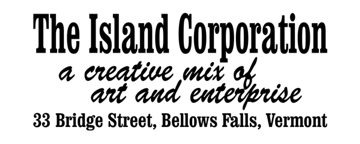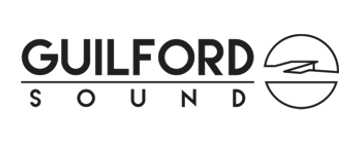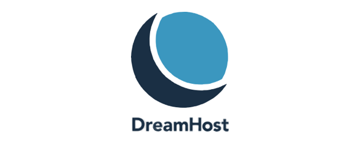 From time to time we write things down that we don’t quite understand as a way to process our thoughts. The wisdom of sharing these exercises is debatable.
From time to time we write things down that we don’t quite understand as a way to process our thoughts. The wisdom of sharing these exercises is debatable.
Dave Ostrowski, the Buffalo NY musician known as Davey O who graced our stage back in 2019, shared a Guardian article with the headline “This should not be normalised: Why musicians are cancelling tours to protect their mental health” on his Facebook page.
The article is about way bigger fish than will ever darken our doorstep, but it glances off a couple experiences we’ve been having here lately. This particular passage jumped out:
“… an industry desperate to spring back to life after a devastating pandemic, with turbo-charged touring and promotional schedules to make up for perceived lost time.”
We could be wrong, but there seems to be at least twice as many shows going on a short drive in any direction from here as there was before the pandemic. Is it euphoria? Desperation? Probably neither… probably, like us, it’s just actual people trying to make their thing be the best thing it can be. There are also new small rooms jumping into the fray, mostly coffeehouse and microbrewery type places trying out live music as an add-on.
We celebrate anything that helps raise the reputation of southeastern Vermont and southwestern New Hampshire as a destination for music and performance and art. Not to mention it being a boon for local and regional musicians and performers.
On the other hand, wearing our venue hat, there’s only so much audience to go around, and by all accounts it’s a smaller audience than it used to be.
Stage 33 Live’s shows are still getting column inches in local press and getting the same social media outreach, still landing on good calendars near and far, all the things… but on-the-ground traction is more scarce than ever.
Our plodding once-every-three-weeks schedule (which may do us no favors) is unchanged, though we did run summer shows this year, something we don’t normally do, to try to accommodate a few of our 36 (three dozen!) dates that were postponed by the pandemic. So we were guilty of helping create an event-overload situation for a little while by doing shows during a stretch when we normally wouldn’t.
We anticipated poor attendance at those summer shows, honestly, based on past experience. But it was worse than expected. Even under normal circumstances there’s just so much going on in the summer. And people want to be outside. Plus COVID hesitancy was still pretty strong, and still lingers. For us, the recovery has been a lot more famine than feast.
Another new wrinkle is that we keep getting whomped by bigger shows. We’re not crying foul, it’s not the responsibility of other places to accommodate us. It doesn’t matter if almost all of our shows are booked and on our website more than a year in advance, it just doesn’t. Touring acts are available when they’re available; tour routing is a tricky business, and venues that want to book touring performers need to book them when the performers have an open date.
And that’s how the marketplace works anyway — it’s up to the little dogs to get out of the way of the big dogs. That’s why we designed our calendar to revolve almost entirely around Sundays (with a brief foray into Third Thursdays). Time was that other area venues — both bigger than us, and smaller than us — rarely ran Sunday (or Thursday) shows. It was a nicely balanced situation, but it’s different lately. We’re not harboring ill will or bad feelings, just saying what is.
It’s terribly important for local and regional establishments to flourish, and for the industry at large to recover. That kinda goes without saying. The world doesn’t revolve around us even though we think it oughtta.
An acquaintance who works for a pretty big national booking agency with some pretty big-name clients told us that ticket sales are fluctuating insanely for touring acts — one night sells out, the next has five people. To us that seems to indicate that some markets are oversaturated.
We don’t know if things are panning out for other venues and hosts like they are for us, but from our vantage it seems like there’s going to be a market correction at some point. Most likely a drawn-out transition. Since we’re not a normal venue with a dollars-are-the-bottom-line endgame, we expect to still be here after the dust settles. Probably.
The part that’s super-hard for us to swallow is that at Stage 33 Live the performers are paid by door receipts. Prior to the pandemic, that program income generally met or exceeded the recommended Fair Trade Minimum Wage suggested by the American Federation of Musicians (for solo players, anyway). But since the shutdown ended and the gatherings restrictions were lifted, that’s only been achieved once. Ouch. Since most of the artist participants are local and regional, most of the money they make stays local and regional, and that benefits everybody.
Paying the performers and presenters before we pay ourselves violates good business practice and is contrary to the counsel of every nonprofit advisor we’ve come across; nevertheless, we pay the artists first. Artists, especially emerging artists, take it in the shorts entirely too often.
Institutionally, we don’t take a cut of the door, or of merch sales, or of tips, and we don’t have income from bar sales. We do have stickers available at performances for a buck each though. Not sure that we’ve actually sold any.
A saving grace for our performers and presenters is that the documentation part of our mission fulfillment has legs — though it sadly doesn’t generate income for anybody but Google, which owns YouTube. (Why don’t we pay for a decent hosting service? That takes money that we don’t have. Why don’t we stick it behind a paywall? We’re not convinced that wouldn’t work against what we’re trying to accomplish.)
Our aggregate online video view count at this writing exceeds 55,000 and viewership has been steadily rising. For a dinky listening room in a dinky village in a dinky state hosting mostly emerging artists, that’s amazing. It’s the equivalent of hosting 1,375 sold-out shows — which by our calendar would take almost 70 years.
Live-streaming is also on the way. It had a couple setbacks but is inches close to launch. For us, the short-term success of that will be any additional attention on the performers and presenters, and long-term success will be both increasing viewership and in-person ticket sales over time. The two prongs — the live part and the documentation part — are intended to be symbiotic: The success of one creating the success of the other.
Anyhoo, we persist. We think what we’re doing is important.












